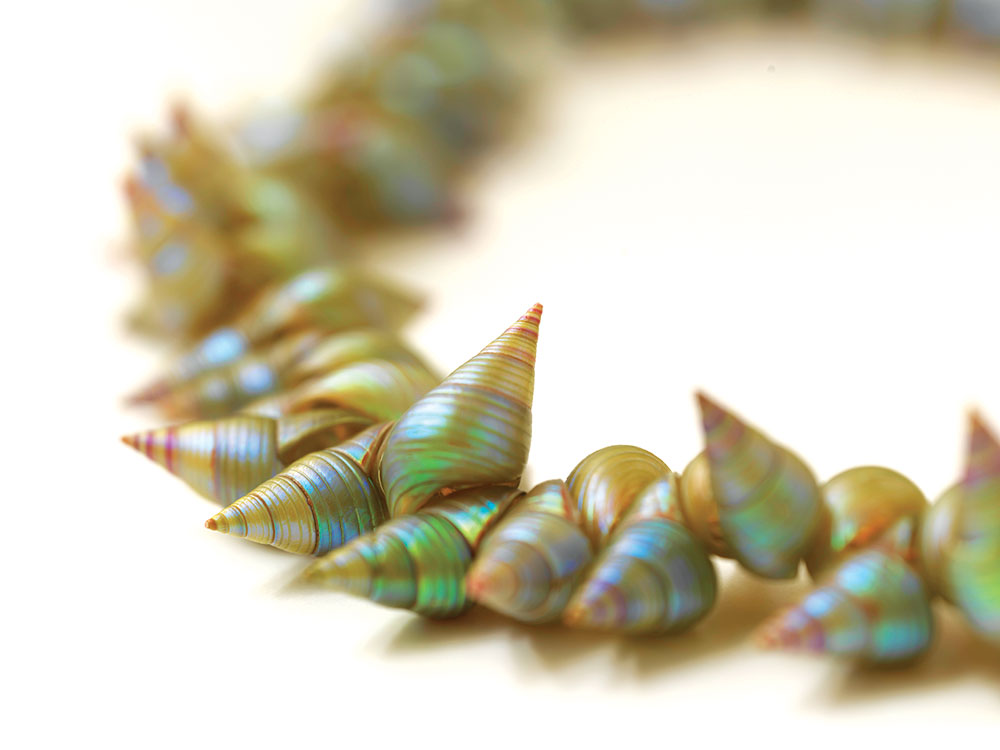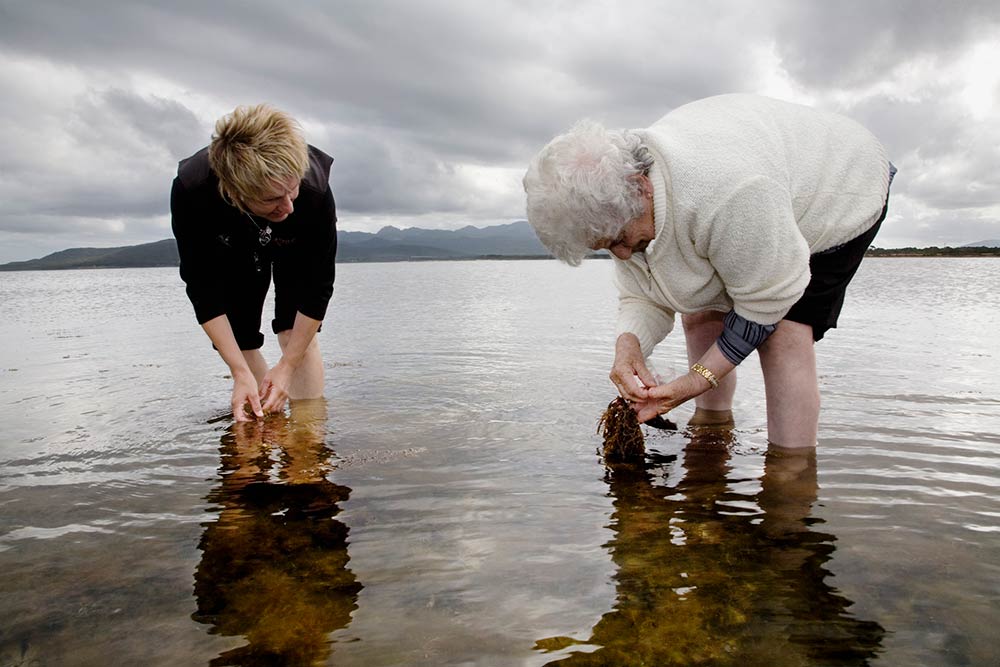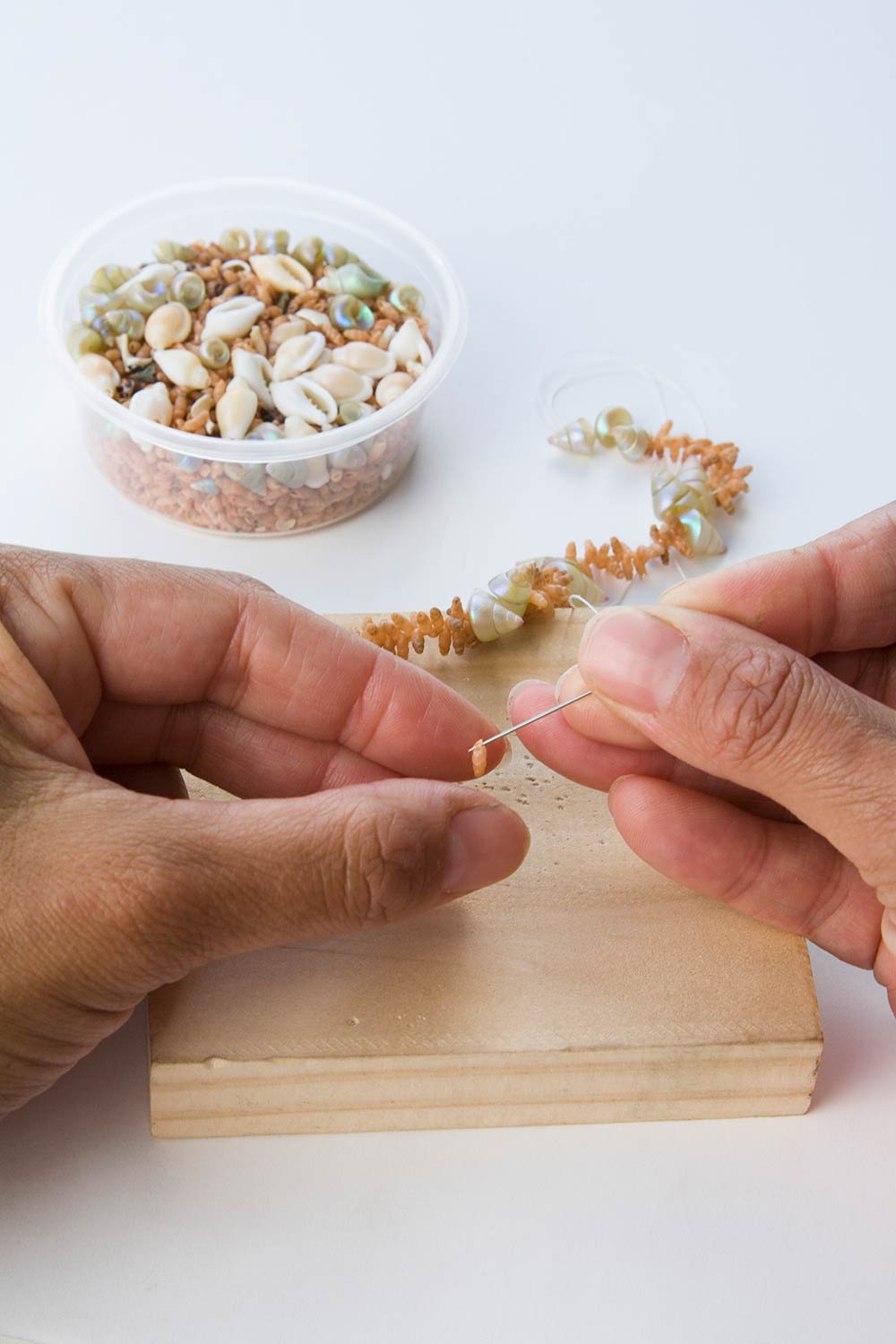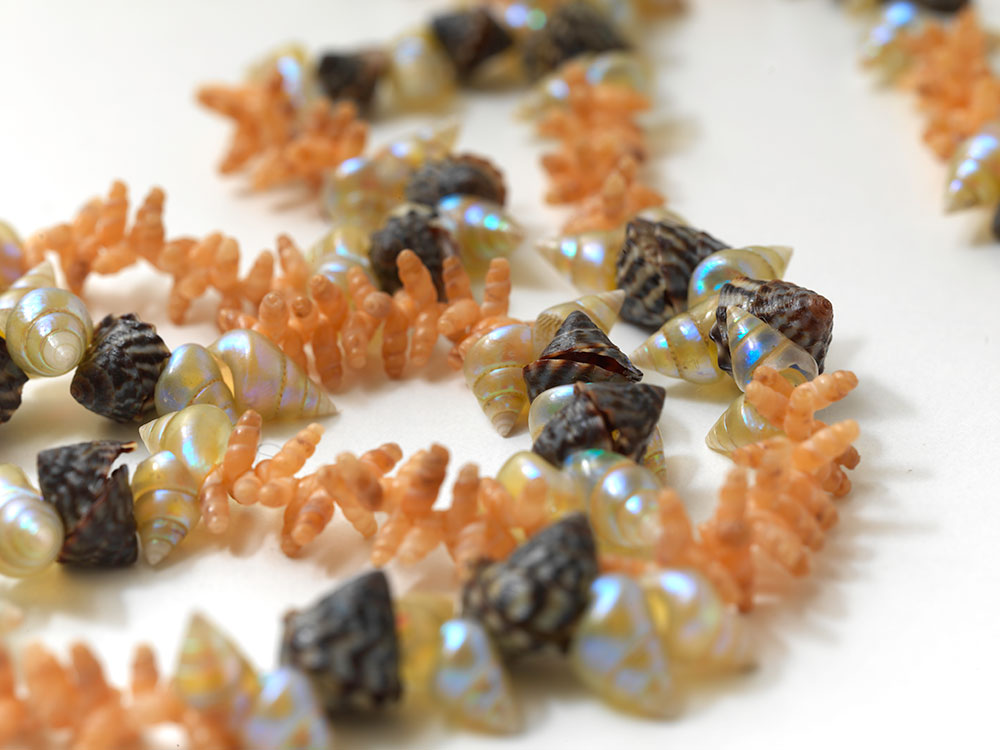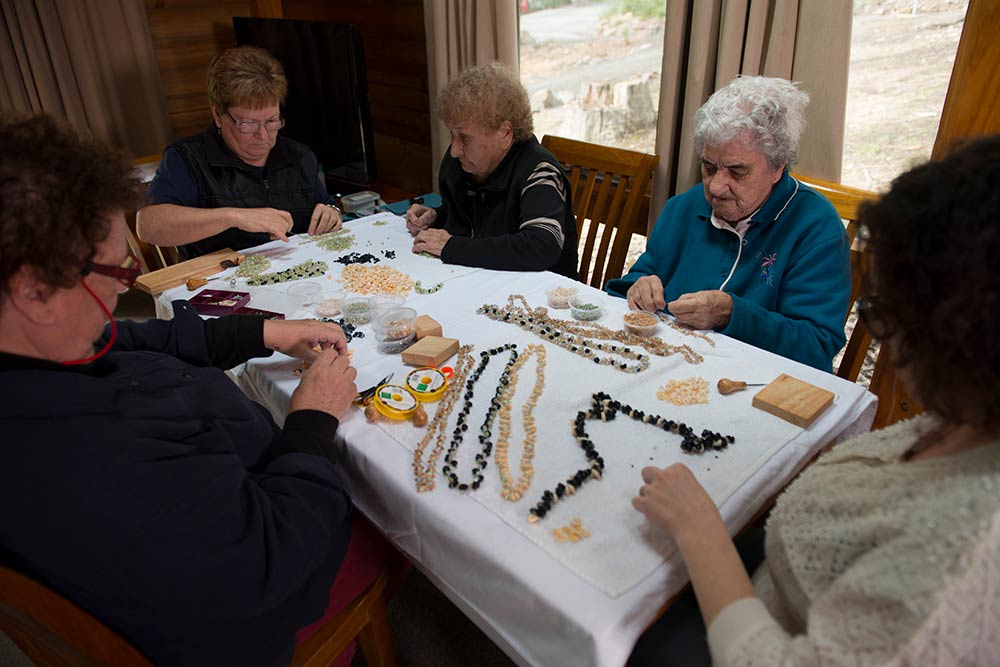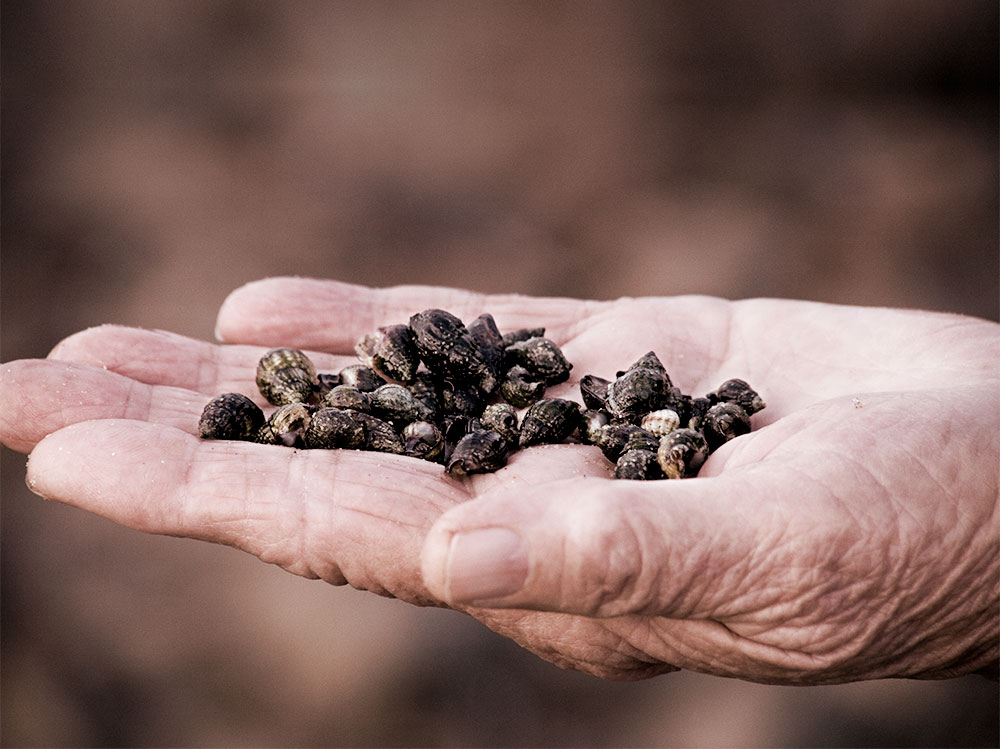Museums across Australia house many unique and fascinating artefacts that reflect past societies and cultures. Until the invention of plastic and synthetic materials, many everyday items such as tools, clothing, jewellery and furniture were made using parts from animals and plants. Identifying the source of the organic material used in these items is important in shaping our understanding of past interactions between different cultures and their environment.
With the source organism confirmed, I then set out resolve the last remaining piece of the puzzle: the age of the lamp. A small piece was sent to the Rafter Radiocarbon Laboratory, GNS Science in New Zealand for a carbon dating analysis. Living organisms exchange carbon dioxide with the atmosphere and therefore contain the same amount of carbon-14, a radioactive form of carbon, as the atmosphere in which they live – but the amount of carbon-14 steadily decreases when an organism dies. This means that the amount of carbon-14 remaining in the organism can reveal how much time has passed since it died. The whale sample contained high levels of ‘bomb’ carbon, which reflects changes to atmospheric carbon-14 levels resulting from nuclear weapons testing in the 1950s. The evidence from this ‘bomb’ carbon suggested the sample was collected sometime after the 1950s.
Commercial whaling increased after World War II and sperm whales were hunted up until the 1970s. Consequently, we were able to narrow down the source of the lamp to a sperm whale harvested sometime between the 1950s and 1970s. The mystery was solved; the lamp represents a sad artefact of 20th-century whaling and the sometimes strange and surprising repurposing of animal body parts.
Whales have been exploited by humans for thousands of years for their valuable meat, oil and blubber. Commercial hunting commenced in the fifth century in Japan and the 10th century in Europe, and spread worldwide in the 19th century. Whale hunting became industrialised in the 1860s with the invention of cannon-fired harpoons and steam-powered ships. It is estimated that 2.9 million large whales were caught and killed during the 20th century. Some whale species have never been able to fully recover from this and require intensive conservation to maintain stable population sizes. It is estimated that humpback whales in the North Atlantic Ocean dwindled from 240,000 to 9,000 during the 20th century. Understanding the full impact of whaling has massive implications for the conservation of contemporary whale populations.

The whaling ship Cheynes III hauls its catch ashore to the Cheynes Bay Whaling Station, Western Australia, 1977. National Maritime Collection, 00054512 reproduced courtesy of Jonny Lewis
Increasing the number of correctly identified whale specimens associated with whaling gives us an in-depth look at population changes over time and insight into populations too fragile to sample in the modern day. The whale lamp held at the Australian National Maritime Museum isn’t the only example of ancient DNA techniques being used to uncover the identity of whaling artefacts. Two separate studies in 2005 and 2012 showed it was possible to extract DNA from whale baleen which could then be used to study population genetics. This was taken a step further in 2016, when a research group developed a method to determine the gender of baleen artefacts. A team at the University of New York in 2012 used ancient DNA techniques to extract DNA from whale bone and baleen to demonstrate that Atlantic and Pacific populations of bowhead whales (Balaena mysticetus) showed evidence of interbreeding and a drop in genetic diversity, potentially due to excessive hunting.
Natural history museum collections are a valuable resource in the study of evolution, and allow us to look into past populations, some of which are now extinct. Ensuring the artefacts within these collections are correctly identified is highly important. In cases where this information is missing, we can use DNA testing to understand the history behind many items. This method was used here to solve the mystery of the whale lamp held at the Australian National Maritime Museum. By combining our expertise and curiosity about unusual museum specimens, Rebecca, Jeremy and I were able to narrow down the source of the lamp to a sperm whale harvested sometime between the 1950s and 1970s. Identifying this sample, and many others like it, will help us understand changes in whale populations as a direct result of whaling.
References
1 A rare exception is the Icelandic Museum of Phallology; see phallus.is/en/.
About the author: Caitlin Mudge is a PhD student working at the University of Adelaide looking into the loss of biodiversity in Australia over the last 10,000 years. Her research interests include conservation genetics, ancient DNA and phylogeography.
Header image: Caitlin Mudge in the lab. Image courtesy of the author
Another content block with copy in itAnother content block with copy in itAnother content block with copy in it
Another content block with copy in it
Another content block with copy in itAnother content block with copy in itAnother content block with copy in itAnother content block with copy in itAnother content block with copy in itAnother content block with copy in itAnother content block with copy in itAnother content block with copy in itAnother content block with copy in itAnother content block with copy in it
Commercial whaling increased after World War II and sperm whales were hunted up until the 1970s. Consequently, we were able to narrow down the source of the lamp to a sperm whale harvested sometime between the 1950s and 1970s. The mystery was solved; the lamp represents a sad artefact of 20th-century whaling and the sometimes strange and surprising repurposing of animal body parts.
Whales have been exploited by humans for thousands of years for their valuable meat, oil and blubber. Commercial hunting commenced in the fifth century in Japan and the 10th century in Europe, and spread worldwide in the 19th century. Whale hunting became industrialised in the 1860s with the invention of cannon-fired harpoons and steam-powered ships. It is estimated that 2.9 million large whales were caught and killed during the 20th century. Some whale species have never been able to fully recover from this and require intensive conservation to maintain stable population sizes. It is estimated that humpback whales in the North Atlantic Ocean dwindled from 240,000 to 9,000 during the 20th century. Understanding the full impact of whaling has massive implications for the conservation of contemporary whale populations.

The whaling ship Cheynes III hauls its catch ashore to the Cheynes Bay Whaling Station, Western Australia, 1977. National Maritime Collection, 00054512 reproduced courtesy of Jonny Lewis
Increasing the number of correctly identified whale specimens associated with whaling gives us an in-depth look at population changes over time and insight into populations too fragile to sample in the modern day. The whale lamp held at the Australian National Maritime Museum isn’t the only example of ancient DNA techniques being used to uncover the identity of whaling artefacts. Two separate studies in 2005 and 2012 showed it was possible to extract DNA from whale baleen which could then be used to study population genetics. This was taken a step further in 2016, when a research group developed a method to determine the gender of baleen artefacts. A team at the University of New York in 2012 used ancient DNA techniques to extract DNA from whale bone and baleen to demonstrate that Atlantic and Pacific populations of bowhead whales (Balaena mysticetus) showed evidence of interbreeding and a drop in genetic diversity, potentially due to excessive hunting.


